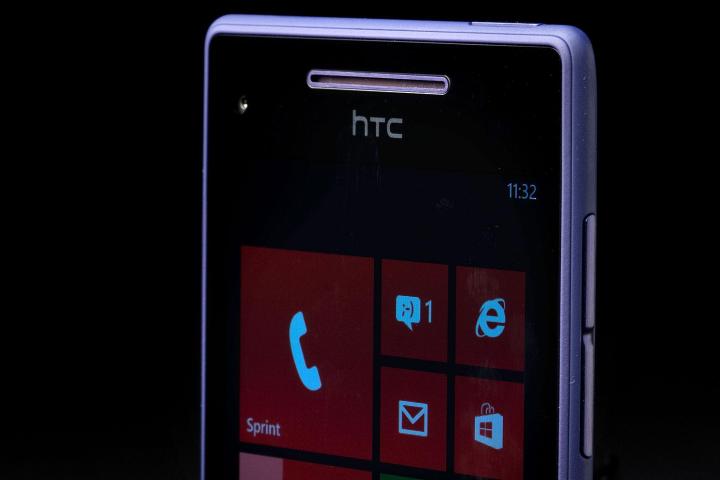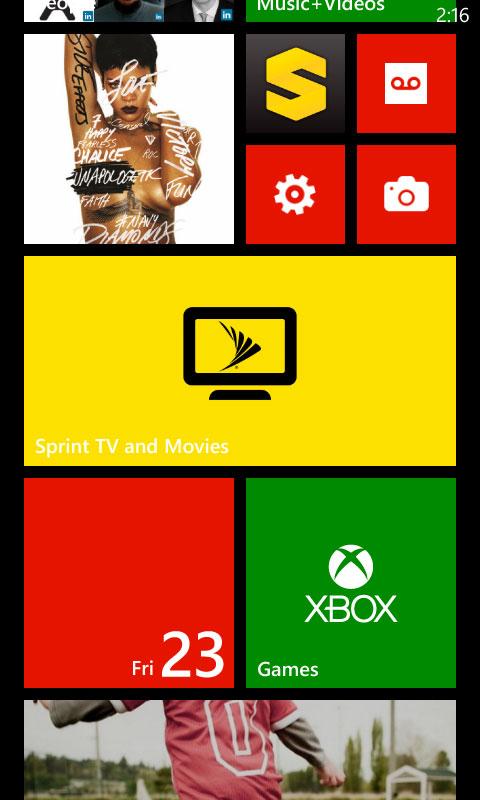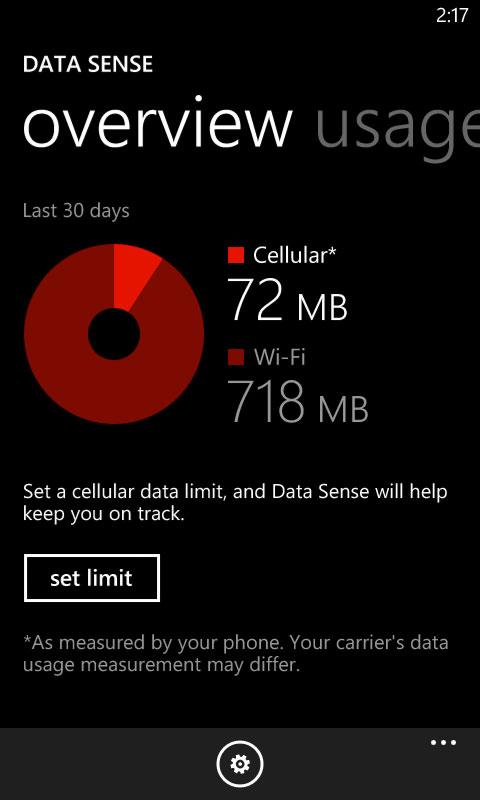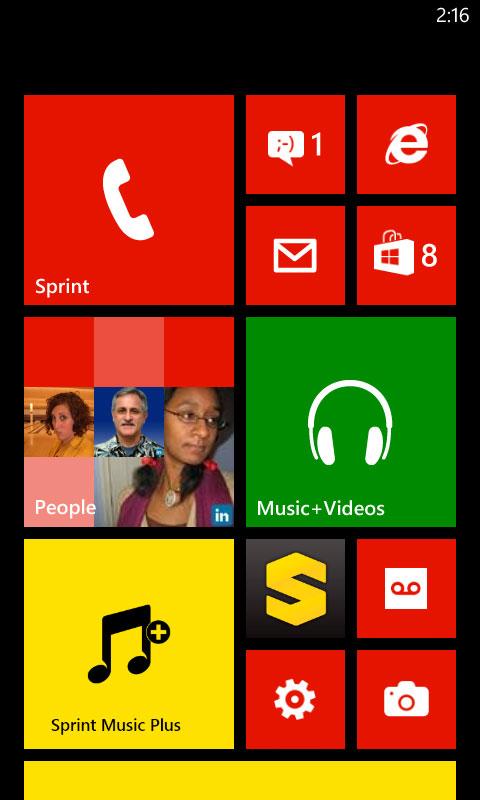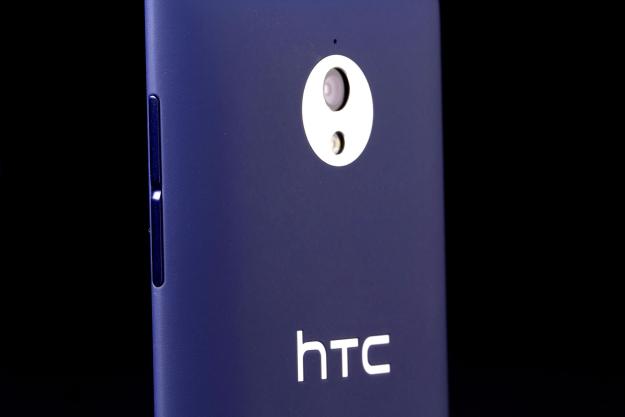
“The HTC 8XT doesn't seem designed to tempt customers to the platform nor is it likely to tempt Windows Phone lovers to Sprint when there are other carriers with superior selections.”
- Colorful and comfortable design
- Loud, rounded audio
- MicroSD slot
- Decent battery life
- Low-resolution display
- So-so camera
- HTC's homegrown app selection can't match Nokia's
- Unimpressive performance
Windows Phone 8 devices are finally coming to Sprint. The first of them, the HTC 8XT, is a clear descendant of the popular HTC Windows Phone 8X. We liked almost everything about that phone, so you would expect Sprint’s 8XT to be a slam dunk. Sadly, you would be wrong.
The design is almost the same, but what’s under the hood is not. To get the 8XT down to $100 on contract, HTC had to make some compromises, and those choices affect the experience just enough to dampen our enthusiasm.
Design and display
The 8XT’s design comes off like Sprint wanted a carbon copy of the Windows Phone 8X with a few tweaks and HTC obliged. The overall design is just about the same, and everything we liked about holding the 8X is here on the 8XT: comfortably curved back, attractive design, colorful exterior. What’s different is that the 8XT’s back pops off giving users access to the microSD card and SIM card slots. Getting the back off is far too difficult, so we suggest buying the biggest memory card you can afford and considering it a permanent part of the phone once it’s in.
The addition of expandable memory is a big plus, as are the two front-facing speakers. Though you’ll have to shuffle your hand up and down the phone to get at the volume rocker on the right and power button on the left, the 8XT is a very holdable phone, just like its predecessor.
Given all that, it’s odd that Sprint and HTC took a step backwards with the phone’s screen. The 4.3-inch display’s resolution of 800 x 480 pixels isn’t wholly unusual for Windows Phone, but it’s less pixel dense than the 8X, which offered 1280 x 720. This resolution means that small text isn’t as crisp as we’d like (and there is a lot of tiny text in the interface as well as on Web pages) and viewing high-resolution content is a second-class experience. At least the screen is bright and colorful with wide viewing angles and decent sunlight visibility.
Audio
Instead of so-so speakers on the back, the 8XT features two front-facing speakers flanking the screen. This improves volume and makes it easier for owners not to muffle sound with their hands. Beats Audio is onboard, and turning it on does result in rounder audio. It’s bass-heavy of course, and sounds better when listening to pop and hip-hop over classical and instrumental. Speaker audio is better than most smartphones, but is still small and no substitute for plugging in a good set of headphones.

Owners have their choice of Xbox Music and Sprint Music Plus. The latter offers ringtones and ringbacks featuring popular music, in addition to the tracks themselves. We still prefer Xbox Music, since past purchases sync automatically and with a music pass customers get unlimited access to millions of songs for one monthly fee.
Windows Phone and Apps
Windows Phone 8 continues to be a decent mobile operating system hampered by a lack of good apps. Despite boasting a total of 160,000 apps now, it’s still missing more than half of the top apps found on iOS and Android. Third-party developers have stepped up to bring some missing services to the platform (YouTube and Instagram, for instance), but this still highlights how top developers aren’t rushing to serve the Windows Phone audience. It’s on the smartphone makers to fill some of the gaps. Nokia does a great job of this with the Lumia line; HTC’s efforts don’t feel as fully baked.
The bulk of HTC’s apps center around the camera and viewing photos (more on this below). Otherwise, there’s the generically named HTC app for weather, news, and stock updates, a flashlight, a converting calculator, and Make More Space for down the road when the internal storage gets fuller. A BlinkFeed-like gathering of social network chatter is baked into Windows Phone, as is a good media store (Xbox Video and Music). The latter renders Sprint’s music and video/TV service pointless – nothing new, unfortunately. We do like that Data Sense, once a Verizon exclusive service, is available here. This app keeps track of how much data you use, breaking it down app by app so you can pinpoint data hogs. You can avoid going over your data cap by turning off background data when you get close and saving syncing/transfers until you get to Wi-Fi.
Cameras
HTC usually excels in the smartphone camera realm, but the 8XT’s 8-megapixel rear shooter is only so-so. Pictures taken in during the day or in decent lighting conditions are color-rich if somewhat noisy. Just don’t expect decent low-light performance, despite HTC’s reputation in this area. The hardware shutter button doesn’t help with night shots, since the image won’t snap until you release the trigger (holding it down activates burst).

The HTC Camera app shows up in the “Lenses” area of the stock camera app, though it’s a fully functional app on its own unlike most Lenses. There’s even an option to make the HTC app the default one for the hardware shutter. We suggest doing so, since this app has a few more settings and options to enhance the 8XT’s pictures. If only the HTC app put more of them just one tap away. Aside from Burst mode, which can take a series of 20 to 60 blurry shots in seconds, there’s also a Photo Enhancer that gives owners a chance to apply more filters to pictures.
The 1.6-megapixel front-facing camera is fine for video chats and selfies.
Specs and performance
The HTC 8XT runs on a 1.4-GHz dual-core Qualcomm CPU and 1GB of RAM, average for a Windows Phone 8 device. During our hands-on time the phone ran well for basic tasks and didn’t lag when playing medium-intensity games. We encountered some lag when switching between more than a dozen apps and the power button is curiously reluctant to turn the phone on when first pressed. Using it isn’t frustrating, the 8XT just isn’t going to give you the smoothest experience.
Instead of so-so speakers on the back it features two front-facing speakers flanking the screen.
Internal storage tops out at 8GB, so that micro SD card slot and 7GB of free SkyDrive will come in handy. Wireless connections include a/b/g/n Wi-Fi, Bluetooth 4.0, NFC, and GPS.
The HTC 8XT is LTE-capable and readily connected to Sprint’s newest 4G network where available – too bad that’s not too many places right now. In the parts of New York City where the network is live, we saw a max of 7.75Mbps down and 1.9Mbps up. These numbers aren’t inspiring for LTE. When the phone dropped to 3G, speeds tended to be incredibly slow to the point where we used the Wi-Fi finder apps often.
Call quality is good enough, just not stellar. Callers could hear us fine, though our voices didn’t always come through sounding natural. Volume on the earpiece isn’t very loud, so it was difficult to hear people with medium background noise.
Battery Life
One advantage of a low-resolution display is longer battery life. The 1,800mAh battery lasted a little over 12 hours with medium to heavy usage with Wi-Fi turned off and no power-saving measures employed. It’ll make it through the day for most people without the need to worry.
Conclusion
The HTC 8XT is going to get a lot of attention for the design, just as the Windows Phone 8X did. Unfortunately, once customers get past the pretty exterior they’re not going to be as impressed with what’s under the hood. Almost everything about the 8XT is so-so: the display, the camera, the performance. The audio quality is above average, we grant you. Sill, we’re not sure why Sprint held off on bringing Windows Phone 8 devices to its network if the debut phone was going to be so underwhelming.
Not every smartphone needs to be a superstar, and we always appreciate lower cost options. However, the HTC 8XT doesn’t seem designed to tempt customers to the platform, nor is it likely to tempt anyone away from a carrier with a superior Windows Phone selection like Verizon, T-Mobile, or AT&T. Even the price involves handwaving: it’s $100 after a $50 rebate, meaning you’ll need to spend $150 up front (unless you’re signing up for new service and bringing your number with you). There are better deals on Sprint for phones with last year’s specs.
Highs
- Colorful and comfortable design
- Loud, rounded audio
- MicroSD slot
- Decent battery life
Lows
- Low-resolution display
- So-so camera
- HTC’s homegrown app selection can’t match Nokia’s
- Unimpressive performance
Editors' Recommendations
- The best cheap phones in 2024: our 9 favorites for tight budgets
- Some Pixel 8 Pro owners are reporting a display color issue
- Watch all of Apple’s Far Out event videos: iPhone 14, Apple Watch 8, and AirPods Pro 2
- The best Samsung Galaxy S8 cases and covers
- Common Samsung Galaxy S8 problems and how to fix them
